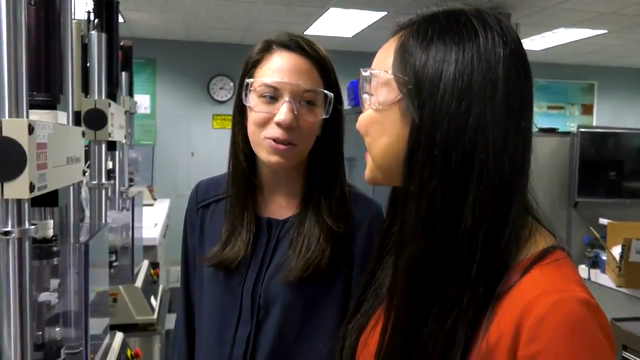Diversity in the Workplace: Women in Leadership
Medtronic works to better support women pursuing leadership roles
Diversity In The Workplace: Women In Leadership
Bronwyn Brophy speaks candidly about her career path. “Growing up, the motto in my house was always ‘you’re as good as everyone else, but no better.’ Throughout my career, I’ve applied that thinking to how I approach my work and how I manage and mentor others. I tell rising female leaders, ‘You have to back yourself, you have to have the swagger and the belief in your own ability. Work hard, speak up, and be your own advocate.’” As vice president and general manager of Medtronic Gynecologic Health, Brophy was recognized three years in a row as one of Ireland’s Most Powerful Women, and, in 2018, she was inducted into the Women’s Executive Network Hall of Fame.
She points out, though, that there is still significant progress to be made in the journey toward gender equality in the workplace. “The glass ceiling has certainly diminished since I started my career,” she says. “But not as much as I had hoped. There is still much that remains to be done.”
According to the 2018 Catalyst Findings on Women in Leadership, women account for less than a quarter (24%) of senior roles globally. The results are similarly disproportionate in the United States. The McKinsey Women in the Workplace study found that in corporate America, only one in five senior leaders is a woman and only one in 25 is a woman of color.
To reduce this gap and make significant progress toward elevating women into leadership roles, companies must move beyond dialogue and focus on action. At Medtronic, action translates into fostering a strong culture of inclusion and accountability; setting aggressive, measurable goals; and implementing policies and programs that accelerate progress.
FOR DIVERSITY TO THRIVE, INCLUSION MUST COME FIRST
Employees who feel that they are part of an inclusive work environment are 42% less likely to say they intend to leave their job within a year.* For diversity to thrive, Medtronic leaders believe building an inclusive culture must come first.
The foundation for that culture began in 1960, when cofounder, Earl Bakken, penned the Medtronic Mission and created a powerful vision for the company. Knowing early on how important diverse perspectives are to business, Bakken dedicated a section of the Mission to employees — specifically to recognize the dignity and the personal worth of employees.
“Our work to create a powerfully inclusive and diverse workplace is essential to our purpose, and Earl was absolutely visionary in this respect,” says Carol Surface, Chief Human Resources Officer, Medtronic. “Over a half century later, the business case is as real as ever: bringing diverse perspectives, diverse experiences, and diverse voices together leads to better decisions and ultimately better business results. For us, this translates to meaningful innovations that help our partners deliver superior patient outcomes.”
ACCOUNTABILITY FOR CHANGE STARTS AT THE TOP
Building and fostering a strong pipeline of female talent at all levels of the company, especially in leadership roles, takes focus and dedication. While commitment to change is important, setting, measuring and communicating goals and metrics is crucial to progress and accountability. Over the last few years, Medtronic has been working toward having at least 40% female leadership in manager and above roles by 2020. At the end of 2018, women held 37% of the management level or above positions globally.
Accountability for results, driven from the top and cascading throughout all managers, is key to advancing the careers of women. Since joining Medtronic in 2011 as Chairman and CEO, Omar Ishrak has emphasized the need for more women in senior leadership roles. He has made inclusion and diversity, in general, a strategic priority, frequently emphasizing the role it plays in fostering innovation and the company’s ability to better serve patients. According to Deloitte’s “The Diversity and Inclusion Revolution: Eight Powerful Truths,” diversity of thought enhances innovation by 20%.†
In 2018, Ishrak committed Medtronic and its employees to accelerate change and gender equality in the workplace by formally joining the Catalyst CEO Champions for Change Initiative. This pledge — to work toward closing the gap on gender equality in the workplace — not only sets the standard for the type of company Medtronic strives to be, but also empowers people managers at all levels to contribute to that change.
“In a global marketplace and diverse world, fostering an enriching and inclusive workplace is essential to our success, as is a commitment to gender diversity and the advancement of female leadership,” Ishrak says. “I truly believe bringing different perspectives to our work, as well as employing a workforce that represents our patients and customers, will create a stronger, better company.” Because of this, Medtronic senior leaders are held accountable for, and measured on, their contributions toward achieving the 2020 aspirational goal. They are expected to measure and create action plans to diversify talent, as well as nurture an inclusive environment where unique voices can be heard.
REDUCING BIAS AND CREATING BALANCE
Today, across industries, women are less likely to be hired into entry-level and manager jobs and are far less likely to be promoted to manager. Studies show that for every 100 men who receive the first critical promotion to manager, only 70 women do.‡ At Medtronic, there is progress to be made in elevating senior women leaders in science and engineering, general management and customer-facing roles.
Recognizing bias can exist in the interviewing process, Medtronic developed programs to ensure diverse hiring slates and interview panels. In 2018, the company hired nearly 16,000 new employees, of which 54% were women.
Creating balance in senior-level roles requires intentional tools and investments in internal growth opportunities for women and facilitating a consistent and fair promotion process. Medtronic provides a variety of development programs for people managers, including unconscious bias training. Likewise, seeking input from women through a structured career development process opens a two-way street for women to share their goals and aspirations and help leaders support the growth of that person’s career.
Seeking input from women has helped shape recent family-friendly policies like the Medtronic Family Care Leave for U.S. employees. Combined with already existing parental benefits, new parents can now receive additional weeks of paid time off. Employees can also take time away to care for an ill family member, or if a spouse is deployed to active duty.
“We are committed to providing all employees flexibility to manage their career through different life stages,” says Surface. “Our job is to ensure women are not walking away and leaving the workforce because they can’t find advancement opportunities or balance.”
Another program giving women more options to balance both a family and the ability to develop a career is Careers 2.0. Research suggests close to 25% of women in engineering careers leave the industry by age 30, citing work culture or family commitments.§ The Medtronic “returnship” program is for individuals looking to get back into STEM-related careers. It provides paid internships that help engineers on-ramp back into the workforce after an extended absence.
“It’s hard to balance career and family. They don’t always go hand in hand,” says product engineer Amanda Miranda. After taking six years off from her career in biomedical engineering, Miranda wasn’t sure she’d be able to return to the work she loved. The Careers 2.0 program gave her the opportunity she was looking for. “You question whether someone will hire you with a gap in your resume,” she says. “When I read the [returnship] job description, I was relieved.”
COMMUNITIES PROVIDE SUPPORT, OPEN DOORS
Accountability from senior leadership is important to drive results, but equally as important is having the voice of all employees contributing to company-wide goals for inclusion and diversity. One of the biggest drivers of inclusion, and perhaps the strongest resource for women at Medtronic, is the Medtronic Women’s Network (MWN). The largest employee resource group (ERG) within Medtronic, the global network is comprised of 14,000 women and men at 105 locations across 60 countries and offers professional development, networking, and mentoring programs and tools that empower women to grow their career and lead.
Employee resource groups like the MWN are critical to creating peer groups and helping individuals combat the feeling of being the “only one” in their respective areas of work. “The MWN is a way for women to connect with others across the company who they might not otherwise have the opportunity to get to know,” says Liliana Gonzalez, vice president of the Medtronic Cardiac and Vascular Group in Latin America and member of the MWN leadership team. “At such a large company, it’s really important to do what we can to make everyone feel connected in some way, provide support, and encourage individuals to pursue their goals.”
Medtronic also offers a group for global senior women leaders called Commit to Connect to ensure female leaders at the level of vice president and above have a strong support system.
MEASURED SUCCESS ACCELERATES PROGRESS
Elevating women in the workplace was built into the DNA of Medtronic by Earl Bakken when he said, “I dreamed of a world where women lead.”
“If we expect to increase representation of women at more senior levels, then we must inspect metrics at all levels in the organization to make that happen,” said Surface. “We don’t have all of the answers, and our policies are far from perfect, but our commitment to getting this right is absolutely there.”
Committed to building a sustainable system that fosters inclusion and diversity, Medtronic continues its work to achieve true gender equality across all areas of the business. Adds Surface, “We should not rest until, at every level of the company, our gender diversity reflects that of the world, which means 50% women and 50% men.”
Learn more about how Medtronic is supporting a global workforce.
*“Diversity Doesn’t Stick without Inclusion,” Harvard Business Review, 2017
†“The Diversity and Inclusion Revolution: Eight powerful truths,” Deloitte Review, issue 22, 2018.
‡ https://womenintheworkplace.com/ (2018)
§ “Why So Few? Women in Science, Engineering and Mathematics" (The American Association of University of Women) http://www.aauw.org/research/why-so-few/ (2010)





